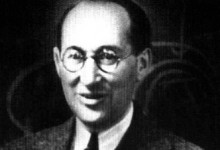Have you ever tried to introduce something new in your team or organization? In case you already have, there is a fair chance that you have come across some hesitation, a bit of friction or even a blunt and painful conflict. A conflict is never a nice experience when you are in the middle of it. There is tension, ambiguity and emotions going in all directions. Things get shaken up. One would be tempted to conclude that a conflict is something to avoid because it doesn’t do any good.
 However, avoiding conflicts altogether is the best recipe for a failed change program. Molecules need to be unfrozen, moved towards a new shape and then refrozen in that exact new shape. Like it or not: unfreezing involves conflict: shaking up a status quo, questioning obvious beliefs, letting go of certainties. In fact, change is hardly even possible without conflict.
However, avoiding conflicts altogether is the best recipe for a failed change program. Molecules need to be unfrozen, moved towards a new shape and then refrozen in that exact new shape. Like it or not: unfreezing involves conflict: shaking up a status quo, questioning obvious beliefs, letting go of certainties. In fact, change is hardly even possible without conflict.
In 1942, Harvard economist Joseph Schumpeter introduced the term ‘creative destruction’ to describe the innovative entry by entrepreneurs as a source of long-term economic growth, even as it destroyed established companies who were guaranteeing stability in terms of employment. In his words: "the process of industrial mutation —if I may use that biological term—that incessantly revolutionizes the economic system from within, incessantly destroying the old one, incessantly creating a new one. This process of Creative Destruction is the essential fact about capitalism. It is what capitalism consists in and what every capitalist concern has got to live in."
As Schumpeter elaborates this thought, it gets even more interesting for organizational change managers: "the problem that is usually being visualized is how capitalism administers existing structures, whereas the relevant problem is how it creates and destroys them. As long as this is not recognized, the investigator does a meaningless job."
The point for us is to focus on the emotional process of unfreezing-changing-refreezing rather than (solely) on the project methodology or project plan at hand. An organizational change program is more than a set of project actions – it is a disruptive experience full of conflicts between the current state and the future state.
___________________
Sources:
Schumpeter, J. A. (1950), Capitalism, socialism and democracy, 3rd enlarged edn, New York: Harper.


